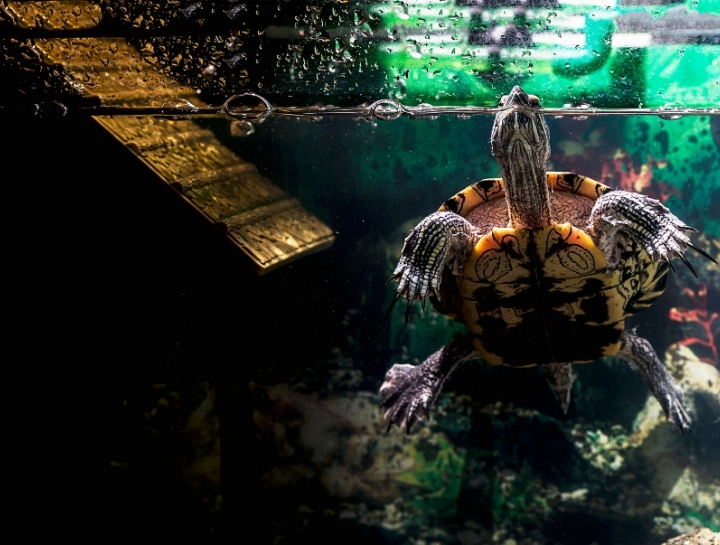Why Is My Pet Turtle/Tortoise Slowing Down This Winter?

Hibernation, or dormancy, is nature's mechanism to protect its cold-blooded creatures (and some warm-blooded animals as well) in cold weather or when food and water is scarce. The farther from the equator the species occurs naturally, the more likely it is to hibernate; the closer to the equator, the less likely.
If you are unsure about your pet, consult your veterinarian or herpetological society to find out how to provide the best environment for a successful hibernation. If you have recently acquired a turtle or tortoise, or have one that is ill or recovering, or a hatchling that is under three years old, do not hibernate them — this group is highly vulnerable to dying if allowed to hibernate.
Turtles and tortoises can hibernate up to a full eight months of the year, depending upon latitudinal location of origin. The exact time your turtle starts hibernating will vary. It depends on where you live and what kind of turtle you own. Typically, the process will start sometime between the middle of September and the middle of October.
You will know it is coming because your turtle will start eating less and become outwardly lazy. Your turtle will stop using energy to hunt and focus more on conserving the fat already in its body. Turtles do this because it's important for their gastrointestinal tract to be clear before hibernation.
Not all turtles are capable of taking on the challenge of hibernation.
They need to be very healthy in order to go so long without food,
even in an inactive state.
Young turtles typically do not need to hibernate for their first few years of life. Most wild turtles die during their first winter because hatchlings have such a hard time surviving hibernation. Underweight turtles are at a high risk. While hibernating, turtles use their existing body weight for sustenance. Underweight turtles may not have enough in their body to sustain themselves.
Sick turtles also should not hibernate. As the fall season approaches, you should bring your turtle to the veterinarian for a pre-hibernation checkup. If your turtle or tortoise can't hibernate, you must keep it warm and provide the optimal diet and husbandry for its growth and/or recovery during the cold months.
There are some careful decisions to make based on the species, health, weight, age, and history of your turtle. Once you have verification of species of turtle or tortoise you own, then you can contact your local herpetological society for further information on how to make sure you provide the right environment for a successful dormancy period.
Dr. Ellen Boyd is an associate at Animal House of Chicago. With a special interest in exotic pet medicine and wildlife, Dr. Boyd feels fortunate to have had the opportunity to work with animals in their natural habitat.
